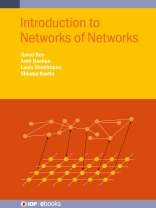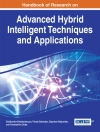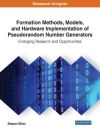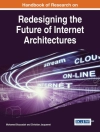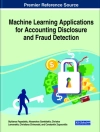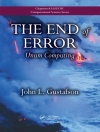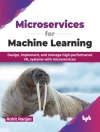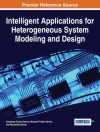As the field of network science has dramatically expanded, researchers have discovered that many networked systems no longer operate in isolation. For example, communications systems often depend on the power-grid to be operational. As our world becomes more and more interconnected and interdependent due to modern technologies, the interactions between networks have taken on increasing importance. In this book, several of the founders and leading researchers in interactions between networks present the key findings in the field, including the possibility of cascading failures between systems, and provide a framework and methods for analyzing ‘networks of networks.
This book is an excellent introductory resource for scientists and graduate students in the field of complex networks in various disciplines.
Key Features:
- Introduces the basic concepts in the developing field of networks of networks
- Reviews fundamental features and new properties
- Special focus on novel features and methods in interdependent networks
- Extensive references to the primary literature
- A broad review for an interdisciplinary academic audience, but suitable as graduate course text.
Inhaltsverzeichnis
Preface
1 Basic concepts of single networks. . . . . . . . . . . . . . . 1
1.1 Introduction . . . . . . . . . . . . . . . . . . . . . . . . . . . . . . . . .1
1.2 Degree distribution—How networks are structured? . . . . . . . . . . .2
1.2.1 Types of networks . . . . . . . . . . . . . . . . . . . . . . . . .2
1.2.2 Degree and degree distributions . . . . . . . . . . . . . . . . . .3
1.2.3 Generating functions . . . . . . . . . . . . . . . . . . . . . . . .5
1.3 Percolation transition—How a network collapses? . . . . . . . . . . . .6
1.3.1 Failure and attack . . . . . . . . . . . . . . . . . . . . . . . . .7
1.3.2 Giant component . . . . . . . . . . . . . . . . . . . . . . . . . .9
1.3.3 Critical threshold . . . . . . . . . . . . . . . . . . . . . . . . . .12
1.4 Further network properties . . . . . . . . . . . . . . . . . . . . . . . . . 13
1.5 Spatial networks . . . . . . . . . . . . . . . . . . . . . . . . . . . . . . 14
2 From single network to network of networks 25
2.1 Introduction . . . . . . . . . . . . . . . . . . . . . . . . . . . . . . . . . 25
2.2 How networks network? . . . . . . . . . . . . . . . . . . . . . . . . . . 26
2.2.1 When a single network is not enough: examples of interacting networks . . . . . . . . . . . . . . . . . . . . . . . . . . . . . . . 26
2.2.2 Zoology of network of networks . . . . . . . . . . . . . . . . . . 27
2.3 Key phenomena in network of networks . . . . . . . . . . . . . . . . . . 29
2.3.1 Cascading failures in interdependent networks . . . . . . . . . . 29
2.3.2 Increased resilience of interconnected networks . . . . . . . . . . 31
2.3.3 Dynamics on network of networks . . . . . . . . . . . . . . . . . 32
3 A pair of interdependent networks 41
3.1 Introduction . . . . . . . . . . . . . . . . . . . . . . . . . . . . . . . . . 41
3.2 Different types of coupling . . . . . . . . . . . . . . . . . . . . . . . . . 42
3.2.1 Feedback condition . . . . . . . . . . . . . . . . . . . . . . . . . 42
3.2.2 No-Feedback condition . . . . . . . . . . . . . . . . . . . . . . . 43
3.2.3 Multiple support . . . . . . . . . . . . . . . . . . . . . . . . . . 44
3.3 Structural percolation . . . . . . . . . . . . . . . . . . . . . . . . . . . 45
3.3.1 Fully interdependent networks . . . . . . . . . . . . . . . . . . . 45
3.3.2 Partially interdependent networks . . . . . . . . . . . . . . . . . 49
3.3.3 Networks with multiple support . . . . . . . . . . . . . . . . . . 53
3.3.4 Interconnected networks . . . . . . . . . . . . . . . . . . . . . . 58
3.3.5 Antagonistic networks . . . . . . . . . . . . . . . . . . . . . . . 62
3.4 Targeted attack on partially interdependent networks . . . . . . . . . . 66
4 Robustness of networks of interdependent networks 77
4.1 Introduction . . . . . . . . . . . . . . . . . . . . . . . . . . . . . . . . . 77
4.2 Structures of networks of networks (NON) . . . . . . . . . . . . . . . . 79
4.2.1 Loopless network of networks . . . . . . . . . . . . . . . . . . . 79
4.2.2 Loop-like network of networks . . . . . . . . . . . . . . . . . . . 79
4.2.3 Regular network of random networks . . . . . . . . . . . . . . . 79
4.2.4 Replica nodes in network of networks . . . . . . . . . . . . . . . 79
4.3 Cascading Failures in a Network of Networks . . . . . . . . . . . . . . . 79
4.3.1 Dynamic process . . . . . . . . . . . . . . . . . . . . . . . . . . 80
4.3.2 Identical steady state results for all tree-like structures . . . . . 85
4.3.3 General Stationary State . . . . . . . . . . . . . . . . . . . . . . 86
4.4 Percolation of network of networks . . . . . . . . . . . . . . . . . . . . 88
4.4.1 Percolation of tree-like network of networks . . . . . . . . . . . 88
4.4.2 Percolation of a RR NON composed of random networks . . . . 93
4.5 Comparing Feedback and No-Feedback Conditions . . . . . . . . . . . . 99
4.6 Vulnerability of network of networks for large number of networks . . . 101
5 Spatially embedded interdependent networks 131
5.1 Introduction . . . . . . . . . . . . . . . . . . . . . . . . . . . . . . . . . 131
5.2 The extreme vulnerability of semi-spatial interdependent networks . . . 133
5.2.1 Percolation transition in semi-spatial interdependent networks . 134
5.2.2 In semi-spatial interdependent networks qc = 0 . . . . . . . . . . 135
5.2.3 Critical exponents of the percolation transition . . . . . . . . . 136
5.3 Semi-spatial model of network of networks . . . . . . . . . . . . . . . . 137
5.3.1 Tree-like network of interdependent networks . . . . . . . . . . 137
5.3.2 Star-like network of interdependent networks . . . . . . . . . . 139
5.3.3 Random regular network formed of interdependent spatially embedded networks . . . . . . . . . . . . . . . . . . . . . . . . . 139
5.4 Fully-spatial interdependent networks: propagation of cascading failures 140
5.5 Effect of dependency link length, the r-model . . . . . . . . . . . . . . 141
5.5.1 Theoretical model of spatial failure propagation . . . . . . . . . 142
5.5.2 Cascades propagation due to random failures . . . . . . . . . . 143
5.6 Effect of connectivity link length, the ζ-model . . . . . . . . . . . . . . 144
5.7 Localized attacks . . . . . . . . . . . . . . . . . . . . . . . . . . . . . . 145
5.7.1 Localized attacks on spatial networks with short-range dependency links . . . . . . . . . . . . . . . . . . . . . . . . . . . . . 145
5.7.2 Localized attacks on spatial multiplexes . . . . . . . . . . . . . 149
5.7.3 Spatial multiplexes with community structure . . . . . . . . . . 150
6 Further Features in Networks of Networks 174
6.1 Synchronization and Dynamics on Networks of Networks . . . . . . . . 174
6.2 Different network structures in networks of networks . . . . . . . . . . 176
6.2.1 Clustering . . . . . . . . . . . . . . . . . . . . . . . . . . . . . . 176
6.2.2 Node correlations . . . . . . . . . . . . . . . . . . . . . . . . . . 177
6.2.3 Directed networks . . . . . . . . . . . . . . . . . . . . . . . . . 177
6.2.4 Community Structure . . . . . . . . . . . . . . . . . . . . . . . 177
6.3 Overlap and Intersimilarity in Networks of Networks . . . . . . . . . . 178
6.4 Different percolation processes in networks of networks . . . . . . . . . 178
6.4.1 Bond Percolation . . . . . . . . . . . . . . . . . . . . . . . . . . 178
6.4.2 Reinforced nodes . . . . . . . . . . . . . . . . . . . . . . . . . . 179
6.4.3 Combining k-core and interdependent percolation . . . . . . . . 179
6.5 Multimodal transportation . . . . . . . . . . . . . . . . . . . . . . . . . 179
6.6 Games on networks of networks . . . . . . . . . . . . . . . . . . . . . . 180
6.7 Controllability in a network of networks . . . . . . . . . . . . . . . . . 180
Über den Autor
Jianxi Gao: Professor Jianxi Gao is at Rensselaer Polytechnic Institute working in the area of network science, especially on network resillience, robustness and control.
Amir Bashan: Dr. Amir Bashan is a senior lecturer at Bar-Ilan’s physics department. His research focuses on applications of statistical physics and network science to biological and technical systems.
Louis Shekhtman: Dr. Louis Shekhtman is a postdoctoral researcher at Northeastern University researching network science and complex systems, specifically in terms of infrastructure, financial, and social networks.
Shlomo Havlin: Prof. Shlomo Havlin is at Bar-Ilan University in the Department of Physics. He previously won the Israel Prize in physics and has been cited worldwide for his research accomplishments in statistical physics, network science, and networks of networks.
